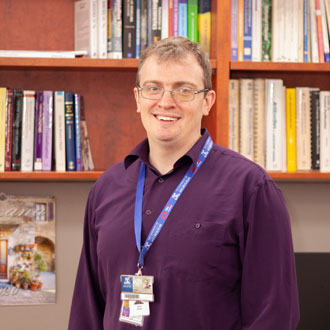New tool outsmarts COVID-19 virus to help vaccine development
University of Melbourne researchers have developed a tool to monitor mutations that make it difficult to develop coronavirus (COVID-19) vaccines and drugs.
Ensuring treatments remain effective as the virus mutates is a huge challenge for researchers. The powerful new tool harnesses genomic and protein information about the virus and its mutations to aid drug and vaccine development.
University of Melbourne Associate Professor David Ascher from the Department of Biochemistry and Molecular Biology leads a research laboratory within the School of Biomedical Sciences. Associate Professor Ascher and his team at the Bio21 Molecular Science and Biotechnology Institute and the Baker Heart and Diabetes Institute developed the software tool and library, dubbed COVID-3D.
Published in Nature Genetics, COVID-3D contains information about all the protein structures that coincide with the SARS-CoV-2 (COVID-19) genome, including every known genetic mutation and its resultant mutant protein structure.

“Although the SARS-CoV-2 virus is a relatively new pathogen, its ability to readily accumulate mutations across its genes was evident from the start of this pandemic,” Associate Professor Ascher said.
“In the context of therapeutic drug design and discovery, these mutations, and the patterns by which they accumulate within the virus’ protein structures, can affect the ability of vaccines and drugs to bind the virus, or to create a specific immune response against it. Because of this, scientists must not only try to control the virus, but outsmart it by predicting how it will change over time.”
Several international universities and research institutions already use COVID-3D in vaccine and treatment development. “At Bio21 it is being used as part of ongoing efforts to understand and develop drugs to treat COVID-19,” Associate Professor Ascher said.
“COVID-3D continues to be updated with new protein structures, mutations and analyses to keep ahead of mutations that cause problems and increasing our understanding of the SARS-CoV-2 mechanisms of disease.”
Read more about the study below: